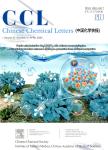Polymeric nanoparticles of poly(2-oxazoline),tannic acid and doxorubicin for controlled release and cancer treatment
Polymeric nanoparticles of poly(2-oxazoline),tannic acid and doxorubicin for controlled release and cancer treatment作者机构:Department of ChemistryNortheast Normal UniversityChangchun 130024China School of Material Science and EngineeringJilin Jianzhu UniversityChangchun 130118China
出 版 物:《Chinese Chemical Letters》 (中国化学快报(英文版))
年 卷 期:2020年第31卷第2期
页 面:501-504页
核心收录:
学科分类:1007[医学-药学(可授医学、理学学位)] 1002[医学-临床医学] 100214[医学-肿瘤学] 0703[理学-化学] 10[医学]
基 金:The financial support of this work from the National Natural Science Foundation of China(No.51673194) Department of Science and Technology of Jilin Province(Nos.20180101196JC and 20180101170JC)。
主 题:Polymeric nanoparticle Poly(2-oxazoline) Drug delivery Self-assembly Doxorubicin
摘 要:A straightforward coassembly strategy was developed for the preparation of polymeric nanoparticles driving by the intermolecular hydrogen bond between neutral poly(2-methyl-2-oxaozline)(PMeOx),tannic acid(TA) and doxorubicin hydrochloride(Dox).The occurrence of the hydrogen-bonding amongst the different functionalities within the formed nanoparticles was verified by infrared(IR) spectroscopy.Scanning electron microscopy(SEM),dynamic light scattering(DLS),UV-vis absorption and photoluminescent measurements indicated the rapid formation of uniform and water dispersible/stable nanoparticles.The relative poor stability of PMeOx-TA-Dox in fetal bovine serum(FBS) solution enabled the rapid separation of Dox and PMeOx-TA,facilitating the release of Dox and its entrance into cellular nuclei as revealed by confocal laser scanning microscopy(CLSM).The presented strategy may provide an efficient alternative for the construction of multifunctional nanomedicines.



